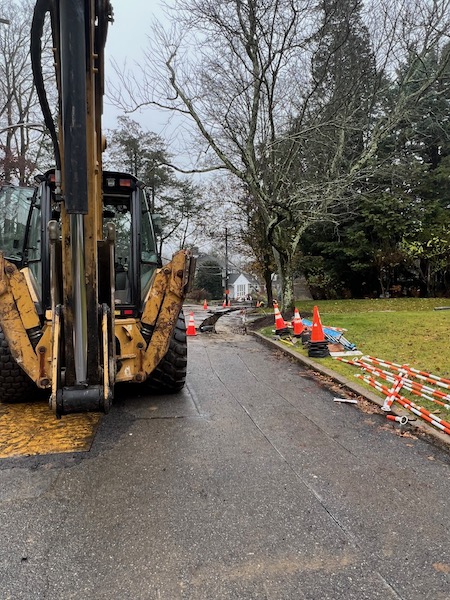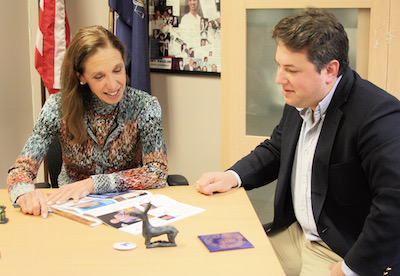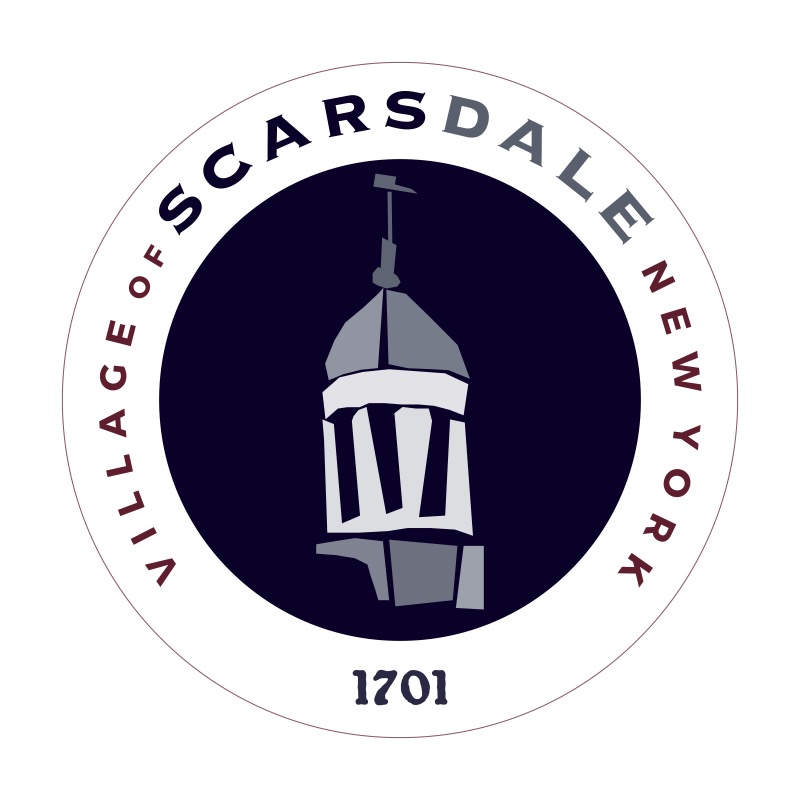No Way to Turn
- Details
- Written by: Joanne Wallenstein
- Hits: 2358
 I usually have to drive around town to chase the news, but for the past three weeks, the mountain has come to Mohammad as they say.
I usually have to drive around town to chase the news, but for the past three weeks, the mountain has come to Mohammad as they say.
I live on a short street in Greenacres that runs between Walworth and Greenacres Avenue. To give you an idea of just how short it is, there are only six houses on each side of the street, all on lots of about 1/3 acre. This bucolic byway, which is usually quiet and empty, has become a major construction site. Every morning a parade of backhoes, pick-up trucks, dump trucks and cars converge. We wake up to the earth shaking vibrations of the back hoes picking up and dropping large steel plates that cover deep open trenches in the roadway.
What’s up?
Though it looks like they are installing the Alaska pipeline, we’re told Con Edison is putting in new gas lines throughout Greenacres. We lived through a similar project that blocked Walworth Avenue for much of the earlier part of 2022 and now they have creeped right up to our door.
When and if I decide to leave home, I need to get out of the car at the top of the driveway, find a Con Ed worker and ask which way it might be possible to exit the block. At the north end, in addition to the work on my street, the same operation is in progress on Greenacres Avenue and a portion of that road is also blocked off. So in order to drive toward Scarsdale Village, I have to do a half mile loop up and around toward White Plains.
Last week, the Con Edison workers struck the street’s water main. That was even more exciting. Emergency vehicles sped to the street in an attempt to stop the flow and our water was turned off for about four hours as the Village worked to repair the pipe.
And if this wasn’t enough fun, in the midst of the chaos, I looked out my back window the other morning to see a police officer speaking to a gardener who was holding a leafblower. Shoot! It was a Monday and the gardener was breaking a new law that says gas leaf blowers can only be used Tuesdays- Fridays. I wondered how the policewoman had traversed the pipes, deep holes and blocked street to find her way into my yard.
Two weeks later I also received a summons in the mail for the same leaf blower violation.
So now, if I can get out of my driveway, I will need to get out of my pajamas for a court appearance in early January to speak to the judge about the summons.
The timing seems rather unfortunate. We’ve lost the use of our street, water service was off and they choose now to issue us a violation for clearing the leaves? I guess no one is above the law … except of course Con Edison.

Assemblymember Amy Paulin Fights Illegal Cannabis Sales with Legislation
- Details
- Written by: Joanne Wallenstein
- Hits: 1642
 Assemblymember Amy Paulin announced the filing of legislation she authored which fights the illegal sale of marijuana and marijuana-related products. Her bill would establish that any business selling cannabis without a license would be subject to a civil penalty of not less than $2,500 for the first violation, $5,000 for a second violation, and the potential seizure of the business on a third violation. The current fine for a business is a mere $250.
Assemblymember Amy Paulin announced the filing of legislation she authored which fights the illegal sale of marijuana and marijuana-related products. Her bill would establish that any business selling cannabis without a license would be subject to a civil penalty of not less than $2,500 for the first violation, $5,000 for a second violation, and the potential seizure of the business on a third violation. The current fine for a business is a mere $250.
Paulin’s bill would also add language to New York State penal law to clarify that unlicensed cannabis retailers are subject to current laws relating to the unlawful sale of cannabis. Current ambiguity in the law has in some instances impeded police crackdowns on illegal sales at shops, which has allowed them to continue illicitly selling.
New York State legalized adult-use cannabis over a year ago with the passage of the Marihuana Regulation and Taxation Act (MRTA), and the New York State Office of Cannabis Management (OCM) recently issued the State’s first retail recreational cannabis licenses, however many communities across the State already have businesses selling cannabis. These sellers are unlicensed and the product they sell is untaxed, unregulated, and delegitimizes the legal adult-use cannabis industry that the MRTA established. Further, these unlicensed retailers pose a hazard to public health as the products they sell do not undergo the State’s growing, processing and testing requirements. As a result unknowing consumers run the risk of purchasing contaminated and harmful products.
The adult-use cannabis industry is expected to generate more than 20,000 new jobs and a $4.2 billion market by 2027 in New York State, which may be undermined if the illegal market continues to thrive. “Individuals applying for the appropriate licensure and complying with the law are at an immense disadvantage when other individuals are evading licensing fees, product regulations, and rules set out by the OCM,” said Assemblymember Amy Paulin. “To ensure the legitimacy of the adult-use cannabis industry, we must penalize bad actors in the same manner as we do for other legitimate industries in our state who operate without a required license. We impose escalating penalties for regulated industries in New York State such tobacco retailers and nail salons. The same rules should apply to businesses selling cannabis without a license. Unlicensed retailers who are selling cannabis products should understand that they will be subject to hefty fines and may jeopardize their entire business if they persist in illegal sales of cannabis.”  Amy Paulin and Dylan Pyne
Amy Paulin and Dylan Pyne
"The current proliferation of illegal marijuana sales is more than just a nuisance,” said Dylan Pyne, President of the Edgemont Community Council. “It threatens the health, safety and well-being of children in our communities. Under the State law adopted last year, licensed sales of cannabis products are not allowed near schools for obvious reasons - but that’s exactly what is happening right now by unlicensed smoke shops and convenience stores. These unlicensed stores make no secret as to who their target market is, placing merchandise, such as backpacks and cartoon-character themed paraphernalia, which appeal to children in their store windows and then offer ‘under the table’ cannabis products which would be most appealing to children in the form of candies and gummies. I applaud Assemblymember Paulin for taking this step and proposing a bill that will help crack down on this dangerous situation happening in our community and across the state.”
California has struggled with illegal cannabis sales since the state legalized recreational marijuana six years ago. Illegal sales in California have far outpaced the regulated market, and many legal operators have closed as a result. “New York needs to act now to shut down illegal sales before we suffer the same fate as California,” continued Paulin. “We need to support legal marijuana sales before illegal sales take over. If that happens we run the risk of a continuance of what is happening right now where we see illegal sales near schools, marijuana products illegally showcased in window fronts, and products being sold without safety standards.
"Research on risks to young people of using marijuana highlights how important it is for states to carefully balance efforts to liberalize drug laws for economic and social justice purposes with the need to protect minors from being exposed to, accessing, and using the drug,” said Linda Richter PhD, Vice President of Prevention Research and Analysis at Partnership to End Addiction. "The shops in our communities that illegally sell marijuana products are well known to young people. The shops are incentivized to violate the current law knowing that the profits from selling marijuana illegally surpass any fines they might face. We need to protect young people by restricting any sales that are not in accordance with New York State laws and regulations, and I commend Assemblymember Paulin for putting forth a bill that will turn the economic tide against these sellers who are breaking the law.”
CNC Seeks Candidates for Village Trustee, Village Justice and Mayor
- Details
- Written by: Joanne Wallenstein
- Hits: 1826
 To Scarsdale Citizens:
To Scarsdale Citizens:
The Citizens Nominating Committee is seeking motivated and Scarsdale citizens to run for the position of Mayor, Trustee on the Village Board, and Village Justice.
If you or someone you know is interested in running for Mayor or Trustee, please have them contact CNC Chair Omer Wiczyk via email at omer@wiczyk.com, or Vice Chair Janet Han at hanjanet@yahoo.com to discuss the CNC’s nomination process. The CNC consists of 30 elected Scarsdale represents who have volunteered to interview and evaluate potential candidates to run for Village office. After reviewing all potential candidates, the CNC will endorse one nominee for mayor and three nominees for Trustee, and will thereafter assist those individuals’ campaign efforts. Please note, the CNC’s process has already begun, and if you are interested you should contact Omer and Janet as soon as possible, but no later than January 6, 2023, at 5pm.
If you or someone you know is interested in running for Village Justice, please have them contact Georgann Callaghan, the Chair of the Judicial Qualifications Advisory Committee, at gmcallag@hotmail.com.
Best,
Omer Wiczyk
CNC Invites Public To Organization Meeting November 28, 2022
- Details
- Written by: Joanne Wallenstein
- Hits: 1684
 The Citizens Nominating Committee welcomed 12 newly elected members and invites the public to observe its first meeting on Monday, November 28, 2022 at 8:00 PM. The meeting will be held in the Scott Room at the Scarsdale Public Library. Members of the public wishing to attend that portion of the meeting are welcome to attend.
The Citizens Nominating Committee welcomed 12 newly elected members and invites the public to observe its first meeting on Monday, November 28, 2022 at 8:00 PM. The meeting will be held in the Scott Room at the Scarsdale Public Library. Members of the public wishing to attend that portion of the meeting are welcome to attend.
Come to the meeting to learn more about Scarsdale's non-partisan system for selecting candidates to run for Village office on the Scarsdale Citizens' Non-Partisan Party slate. The meeting will be recorded and will air on Scarsdale Public Television.
The CNC consists of 30 elected Scarsdale residents who represent their neighborhood election units (Edgewood, Fox Meadow, Greenacres, Heathcote and Quaker Ridge). New members are elected to the CNC each November to serve staggered three-year terms. The volunteer group will meet over 5-6 meetings from November through January to seek, interview, and evaluate potential candidates to run for Village office. This year the CNC will nominate individuals to run for mayor, for three openings on the Scarsdale Village Board, and for Village Justice. Mayor Jane Veron is finishing her two-year term, Trustee Jonathan Lewis will be finishing his second two-year term, and Trustees Sameer Ahuja and Karen L. Brew will be completing their first two-year term. In addition, Cindy Dunne, has been serving as Active Village Justice since January 2022, when Jack Alemany stepped down. The General Village Election will be held on Tuesday, March 21, 2023.
Scarsdale's non-partisan system has been operating successfully for over 100 years, following a contentious election in 1909. The goal of the non-partisan system is to attract qualified citizens who would otherwise avoid campaigning, but would be willing to run for office. The CNC's deliberations and due diligence on all potential nominees is kept confidential to further encourage well-qualified volunteers to apply for a spot on the non-partisan slate. Typically, there are four non-elected and non-voting administrative members of the CNC present to ensure adherence to the procedural requirements of the Non-Partisan Resolution. Potential candidates also have the option to run for office outside of the Non-Partisan System under provisions of New York State law.
Are you interested in running for the position of Mayor or Trustee on the Village Board? Do you know someone who would serve the Village of Scarsdale well? Contact any elected member of the CNC, or inform the CNC Chair, Omer Wiczyk at 516-642-7795 or omer@wiczyk.com; or CNC Vice Chair, Janet Han at 310-909-3760 or hanjanet@yahoo.com.
The current elected Members of the CNC are:
Daniel Besikof
Liang (Leon) Xin
Laurie Medvinsky
Richard Wingate
William McInerny
Raju Sitaula
Jill Spielberg
Laura Thierer
Kay Eisenman
Heath Sroka
Lynne Clarke
Scott Harris
Emily Finn
Zhendi Shi
Mary Pat Jones
Jared Stern
Ralph Geer
Elain Weir
Thomas Dundon
Amy Frank
Rachel Zolot Schwartz
Lynn Badain
Manisha Marria
Marjorie Meiman
Alex Forschner
Aubrey Claude Phillibert II
Jessica Weintrob
Matthew Zik
David Glattstein
Rohini Sahni
Board Hears $4.7 mm Proposal to Revamp SHS Auditorium and Asks, Is This The Way To Go?
- Details
- Written by: Joanne Wallenstein
- Hits: 2272
 The SHS auditorium circa 1980?It’s the project that doesn’t get done. Long in need of renovation or even replacement, the Scarsdale High School auditorium gets shabbier each year. Worn and torn carpets, broken seats and shedding ceiling tiles are the most visible of the issues, but the needs extend far beyond what the audience can see.
The SHS auditorium circa 1980?It’s the project that doesn’t get done. Long in need of renovation or even replacement, the Scarsdale High School auditorium gets shabbier each year. Worn and torn carpets, broken seats and shedding ceiling tiles are the most visible of the issues, but the needs extend far beyond what the audience can see.
Who knew that the original auditorium, built in 1938, was actually “gymnatorium,” which could function both as a gymnasium and a performance space, similar to the facilities at Edgewood and Greenacres Elementary Schools. As it was not primarily a performance space, acoustics, lighting and even sight lines to the stage were not a priority. The audience area is not pitched steeply enought to allow the audience to view the stage from many areas of the room.
But after large gymnasiums were constructed at the school, the auditorium was improved.
In the early 1980’s these renovations included:
The removal of the mezzanine
Installation of ceiling clouds and wood paneling
Expansion of seating to accommodate an audience of 768
In the mid-2000’s more work was done with the installation of the orchestra lift, updates to the sound and lighting systems, replacement of the curtains and rigging system and refinishing of the woodwork.
Finally the 2014 bond project included $1mm for the auditorium to address a host of outstanding issues, but due to cost overruns on other projects, only the water mitigation issue at the school was dealt with at the time. In subsequent budgets, funding has been allocated to address the rigging, lighting, sound system, and electrical systems.
Unfortunately, there is still much to be done. In fact, the current estimate to address the remaining needs is $4.7 mm.
At the school board meeting on Monday November 14, Ken Schupner an architect with BBS presented the findings of the High School Auditorium Committee who has been working to assess needs, look at comparable schools and get community and user feedback. Proposed improvements to the stage - and proscenium
Proposed improvements to the stage - and proscenium
Among the problems that were identified were:
Acoustics: consultants identified deficiencies in the rooms design and proportions, the proscenium(area in front of the curtain), in the ceiling, the HVAC and found acoustical dead spots. They provided a lengthy analysis of troubles pots that can be seen here:
But that’s just the beginning.
The report documents many more problem spots.
The seating is in disrepair
The wood paneling is deteriorating with section missing and damaged
The carpet is frayed and torn
Access to the auditorium is asymmetrical and lacks optimal function
The catwalk is impractical for student us and potentially safety concern
Tormentor bars are inaccessible to student and adults. (Teasers & tormentors are stage curtains that are placed immediately upstage of the proscenium arch to reduce or reshape the size of the opening.)
Lighting instruments on one side cannot be focused, serviced or used effectively.
There is limited dressing room and costume storage space.
The stage flooring is aging, there is wear and tea, splintering and erosion of the surface that presents safety concerns
Audience sight lines are limited and challenging because the pitch of the seating area is not steep enough to provide clear viewing angles.
Persistent water intrusion remains a problem in the music rooms and backstage area. Due to an aging roof system the leaking prevents full utilization of the backstage storage area.
To help the Board visualize these issues, the committee created a video with a tour of the facility showing where the problems exist and how it limits the student experience.
The video includes SHS Principal Ken Bonamo who says, “Renovating the auditorium has been on our docket for a decade. Now we have the opportunity to do the whole thing at one time.
Investments in facilities have to match investments in education to have performances at the level the community expects. I understand the significance of this investment and I thank you for your support of this project.”
 Stairs would be added from the audience area to the stage.Architect Ken Shupner then gave an explanation of the renovation plans which included:
Stairs would be added from the audience area to the stage.Architect Ken Shupner then gave an explanation of the renovation plans which included:
Removal of acoustic clouds
Acoustical wood treatment of interior perimeter walls
Proscenium acoustical modifications
HVAC and duct improvements
New sound system
Refurbishment of the ceiling
Demolition and reconstruction of interior perimeter walls and entry corridor
Replacement of the audience seating
Wood wainscott, horizontal acoustic shelf with crown and Tormentor platforms
Tuning curtains (sidewalls and rear wall)
Venetian curtain repair and clean
Interior painting
Repair, skim and paint concrete floor
Replacement of the carpeting
Installation of new stairs and ramps at the front of the house
Rigging Recommendation:
Relocate the front-of-house truss power and fixtures to catwalk
Modify existing catwalk for additional height and add ladder access to tormentors
Lighting Recommendation:
Remove power and requisite cabling from the front-of-house lighting batten, and move to the catwalk
Backstage Area Recommendation:
Remove the wall dividing the costume storage hallway and the dressing room thereby expanding the usable space for dressing. Divide the single dressing room into two separate and equally-sized spaces, usable by any gender. Installation of an ADA lift in the rear corridor.
Performance Area Recommendation:
Replace the surface of the stage, behind the proscenium arch. Sand, buff and refinish the surface of the stage, in front of the proscenium but behind the orchestra pit.
Audience Sight Lines Recommendation:
New seating should be appropriately staggered. Continue to research performance platforms
Water Mitigation Recommendation:
Include replacement of the Band Room Roof in the 2023-24 school budget Include funds in a future bond to resolve back storage area water instrusion issues.
Here are the estimated costs:
Acoustics $1,902,190
House Area - $1,765,668
Rigging - $497,555
Lighting - $390,389
Backstage Area - $107,166
Performance Area - $71,614
Grand total $4.734,581
Assistant Superintendent Stuart Mattey explained that there are some funds available for this project: $2.825,152 is left over from the 2018 bond and there is also $574,839 remaining from Phase 1 and Phase 2A of the project. Also available is $135,000 in the Debt Service Reserve, bringing the total funds available to $3,534,281.
So the district would only need $1.2 mm to fund this. Mattey proposed two options for raising the funds:
Option 1 would be a one-time tax increase in the 2023-24 tax levy of ¾- to 1%.
Option 2 would be to bond the project. If so he suggested a bond proposition in May 2023 allowing work to be completed by the winter of 2024.
Not everyone was convinced that this is the way to go. Scarsdale School Board member and architect Bob Klein said, “As an architect I am pleased with the quality of the report and 100% in favor of improving the auditorium. But I do have serious concerns. Do the bones of the room and the DNA allow you to do what you want to do? We are trying to convert a gymnatorium into a state of the art auditorium. The price tag shocked me. It’s a lot of money to get something we really don’t want. Is this the right investment to give to the performance arts a space they want? I kept hearing we were not getting the ideal; we are able to improve it, but there is compromise after compromise for $4.7 mm. “
He continued, “What would we really want if we were to redo it? Is there a way to deliver that? I think you have solved the problem you were asked to solve – but is that the right problem? Is this really what we want to do today? It concerns me that we are trying to manipulate a space – but I am not convinced. Is this the right solution? It behooves all of us to make sure we are solving the right problem.”
Schupner replied, “We are doing the best we can with what we have.”
Klein said, “I am not sure I buy that. If I were a tax payer I would want to know that our homework was done. Can we switch this around and get what we want? We are forcing this to do what we want it to do.”
Jessica Resnick-Ault thanked everyone saying, “We don’t have to decide on this tonight – we have time to mull on it. I am glad Bob has given us another angle to consider.”
Klein continued, “What would be the right size auditorium for Scarsdale High School? I want to make sure we do the best thing we can do with our resources. It’s an exercise that can be done.”
Susie Hahn Pasciutti said, “It’s near and dear to my heart that the kids have a place to perform. If we did not do this project, where would be spend this money? What are we seeing now in terms of seats? Do we have the right number now?”
Colleen Brown agreed. She said, “This deserves our attention, sooner rather than later.”
Ron Schulhof asked, “What are other needs from the Building Conditions Survey? What is the confidence level that this will correct our issues?
Klein added, “if there was a way to build an auditorium in another part of the school, we could use this one while the other one is being built.”
Superintendent Drew Patrick rephrased Klein’s question. He said, “Have we identified the right questions?”
As the meeting drew to a close, Patrick asked the Board for more funds to allow the architects to do further analysis of the costs for a new auditorium vs. the renonvation and agreed to put this back on the agenda for a future meeting.

















